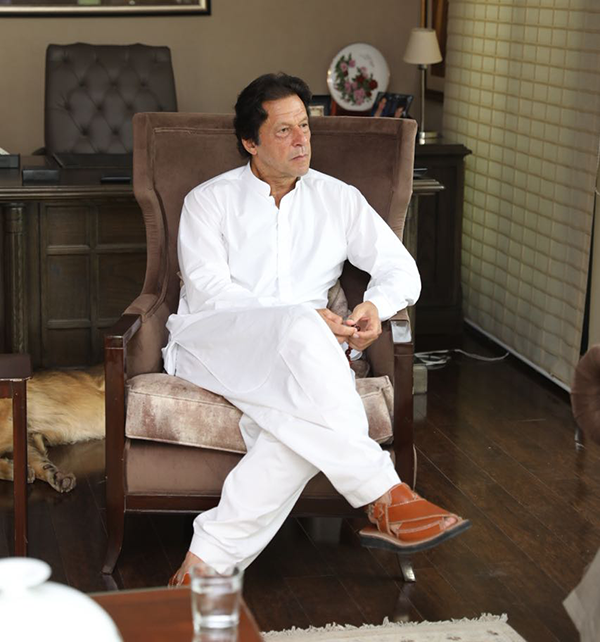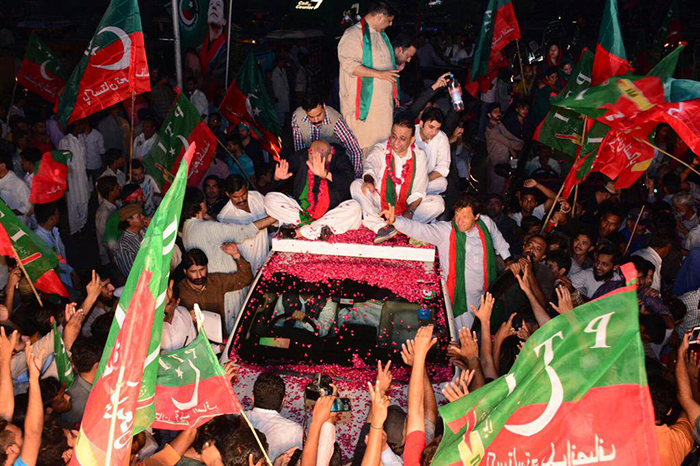Dear American Media: How Not To Talk About Muslims
The American mainstream media boasts a voracious appetite for caricaturing, simplifying, and neatly categorizing non-Western people and life, especially when it comes to Muslim people and life. The most recent example of such sensationalist dehumanization came in the wake of the recently concluded elections in Pakistan that saw philanthropist-cum-politician Imran Khan sweep to victory. The outcome of these elections presented the Western media with a vexing conceptual difficulty: the man Pakistanis had elected as their Prime Minister, Imran Khan, does not neatly fit the predetermined categories that Muslims are supposed to fit into: liberal, conservative, fundamentalist, radical, moderate, etc. He is a complex figure who is Oxford-educated and yet deeply critical of Western hegemony; he calls for an Islamic welfare state and yet looks to Scandinavian countries as ideal models for such a state; he calls for good relations with India and yet condemns the Indian state’s violations of human rights in Kashmir. Presented with this less-than-neat narrative amenable to comfortable translation, the US media resorted to a shockingly despicable display of stereotypes and smug arrogance.
Is Imran Khan, a legendary cricket player and international sex symbol, about to become the leader of Pakistan, an Islamic republic with nuclear weapons? https://t.co/aHQ57P6BUv
— The New York Times (@nytimes) July 25, 2018
Take for instance an instructive example from the New York Times. After the elections, the lead of an article on its Twitter feed read as follows: “Is Imran Khan, a legendary cricket player and international sex symbol, about to become the leader of Pakistan, an Islamic republic with nuclear weapons?” And the article's title read: “Nuclear-Armed Islamic Republic Gets Unpredictable New Leader.”1 These headlines and the commentaries that followed them toxically combine Islamophobia, stereotyping, and copious expenditure of plain ignorance verging on the bizarre. They also smack of classic Orientalism: the insidious stereotyping of the East, the Orient, to establish the civilizational superiority of the West. Notice how the first lead juxtaposes the image of the licentious brown body, unable to control its carnal desires, with that of the fanatic brown body, always on the precipice of violence. “A sex symbol with nuclear weapons”: how eerily analogous to nineteenth-century Orientalist depictions of Muslims that sutured images of the sensually overflowing harem with that of the barbaric militant. Exoticization and dehumanization often go hand-in-hand.

Newly elected Pakistani Prime Minister Imran Khan in a photo shared by the PTI official Twitter account on August 6, 2018.
Turning to Imran Khan, the newly elected Pakistani Prime Minister: it is true that in his younger years he was an iconic and attractive cricketer with a massive global following among members of all genders. Yes, he did date multiple women and was widely admired and sought after, much like many other celebrities. But his dating life three to four decades ago is hardly even peripheral, let alone central, to his politics today. Yet almost every Western (and sadly even many Indian) commentaries on the Pakistani elections have begun, predictably and in the most hackneyed fashion, with a mention of Imran’s so-called “playboy” image and status during his long-over cricketing years. A far more important, ongoing, and relevant aspect of his non-political biography is his role as a leading philanthropist in Pakistan who established the country’s largest cancer hospital in 1994. The Shaukat Khanum Memorial Hospital, named after Khan’s mother who died of cancer, has provided a remarkable 70% of its patients free treatment for almost twenty-five years. He also established Namal University, a leading university in rural Punjab where underprivileged students receive Bradford University degrees. These philanthropic achievements—a lot more central to Khan’s popularity among the Pakistani masses than his “sex appeal”—receive passing if any mention in the Western media. And the descriptor “unpredictable leader” for Khan is essentially a code word for a brown leader who is not an American stooge, like most of his predecessors.
Returning to the NY Times lead: pause also at the phrase “an Islamic republic with nuclear weapons.” NY Times must remind its readers that we are talking about an “Islamic republic” lest they forget that this conversation is about the “Muslim other”; all other possible features and descriptions of a complicated country like Pakistan stand colonized by and reduced to its “Islamic-ness.” I wonder how often the Times has described Israel as a “Jewish state with nuclear weapons?” Not often, I suspect. And on the menacing specter of nuclear weapons in “irresponsible” Muslim hands, how curious that the only country in human history that has in fact bombed a population with a nuclear weapon, unleashing catastrophe for several generations, is none other than the United States.
The NY Times is not an isolated example. One can point to several other cases of Islamophobia and fear mongering that enveloped US media and intelligentsia post-Pakistani elections. For instance, Washington Post’s editorial board ran an opinion titled “Pakistan’s likely next leader is a Taliban sympathizer.” Bruce Riedel of the Brookings Institution commented that the “most dangerous country in the world just got considerably more dangerous.” The Economist scored the top prize in cross-cultural incompetence by calling Imran Khan the country’s next president instead of Prime Minister; the shift in political vocabulary, even if in English, was a bit much to handle for The Economist. One may note in passing that Imran Khan is not a Taliban sympathizer; rather, he is opposed to fighting militancy through army operations alone and has called for coupling them with political dialogue. By this measure, the current US government, which has now, out of necessity, also adopted Khan’s long-running position of negotiating with the Taliban, is no less a Taliban sympathizer.
When confronted with difference, the search for equivalents closer to home represents another common American media trait. In this case, the ready-made equivalence that has become the staple for US commentators is that between Imran Khan and Donald Trump. Just like Trump was elected on a platform of populist nationalism, is blunt and brash, and unexpectedly shot to power from the political wilderness, so too all this applies to Khan. Thus, Khan is Pakistan’s Trump. This has emerged as an incessant argument of the US media and intelligentsia, most notably proffered by CNN’s Nic Robertson who based his entire story with the nuanced title of “Imran Khan: Pakistan’s Trump?” on a few hours he spent with Khan on the campaign trail six years ago!
There are three main reasons the Khan-Trump comparison is ridiculous. First, it completely ignores the question of power differentials. There is a massive difference between a white American Anglo-Saxon Protestant’s galvanizing of white nationalism by inciting hate against minorities and the appeal to popular sovereignty by a political figure in a postcolonial society like Pakistan buried under the rubbles of neo-imperial power. Second, Khan did not suddenly or unexpectedly rise to power; his recent victory rather is the result of a twenty-two year-long political career and struggle. And third, comparing a con artist who specialized in building casinos in America with a philanthropist who built state-of-the-art cancer hospitals in an impoverished country like Pakistan is at once unjust and clumsy.
Engaging difference is often difficult and messy. And while one can expect nothing better from the mainstream American media, one hopes that the American people will take what they get from that media with an abundant dose of suspicion, especially with regards to coverage of Muslim majority countries like Pakistan.
1 As noted at the end of the linked article, the digital title has been changed. The page A1 print edition of the Times ran with the title “Nuclear-Armed Islamic Republic Gets Unpredictable New Leader,” on July 27, 2018.
SherAli Tareen is an associate professor of religious studies Franklin and Marshall College in Lancaster, PA. (stareen@fandm.edu)
Header image: Imran Khan waves to supporters at a Pakistan Tehreek-e-Insaf (PTI) party rally in 2015 in an image from the PTI Lahore official Twitter account. https://twitter.com/PTIOfficialLHR/status/649595736581996544






